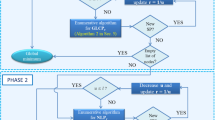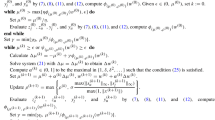Abstract.
Convex quadratic programming (QP) is of reviving interest in the last few years, since in connection with interior point methods Sequential Quadratic Programming (SQP) has been assessed as a powerful algorithmic scheme for solving nonlinear constraint optimization problems. In this paper we contribute to the investigation of detecting constraints that cannot be active at an optimal point of a QP-problem. It turns out that simple calculations performed at the beginning of (or even during) an optimization procedure allow early decisions on the deletion of such superfluous restrictions. For feasible point procedures or active set strategies such information are essential to shrink down the problem size and to speed up iterations. For practical applications the necessary computations only depend on data of the QP-problem. Comparing those quantities with (current) values of the objective function deliver conditions for the elimination of constraints.
Similar content being viewed by others
Author information
Authors and Affiliations
Additional information
Manuscript received: March 2000/Final version received: March 2001
Rights and permissions
About this article
Cite this article
Recht, P. Identifying non-active restrictions in convex quadratic programming. Mathematical Methods of OR 54, 53–61 (2001). https://doi.org/10.1007/s001860100145
Issue Date:
DOI: https://doi.org/10.1007/s001860100145




